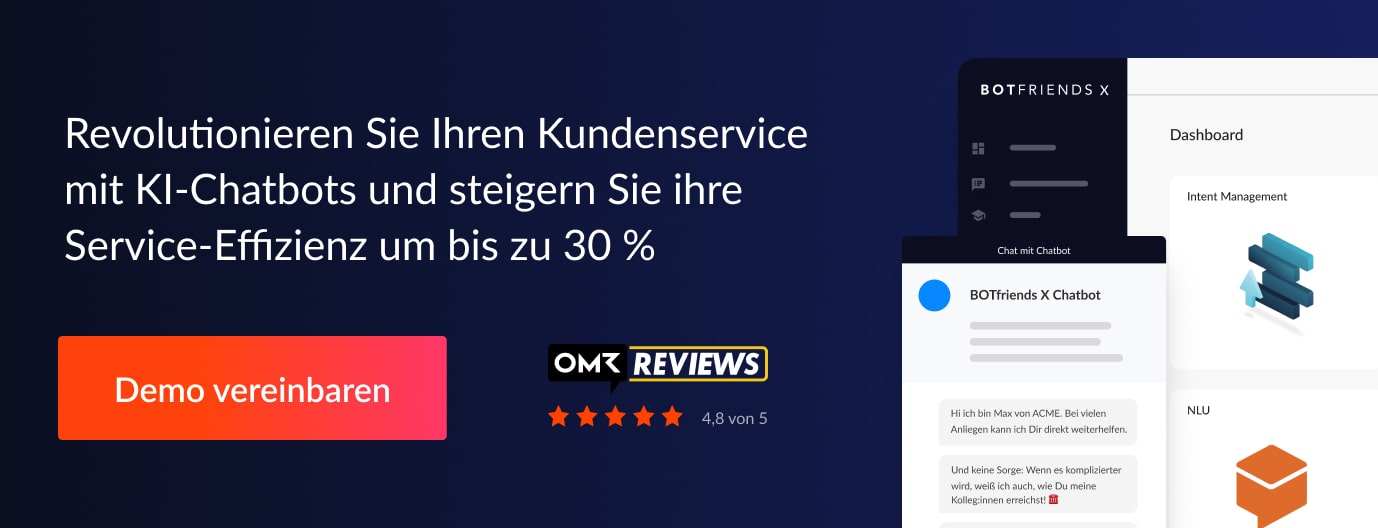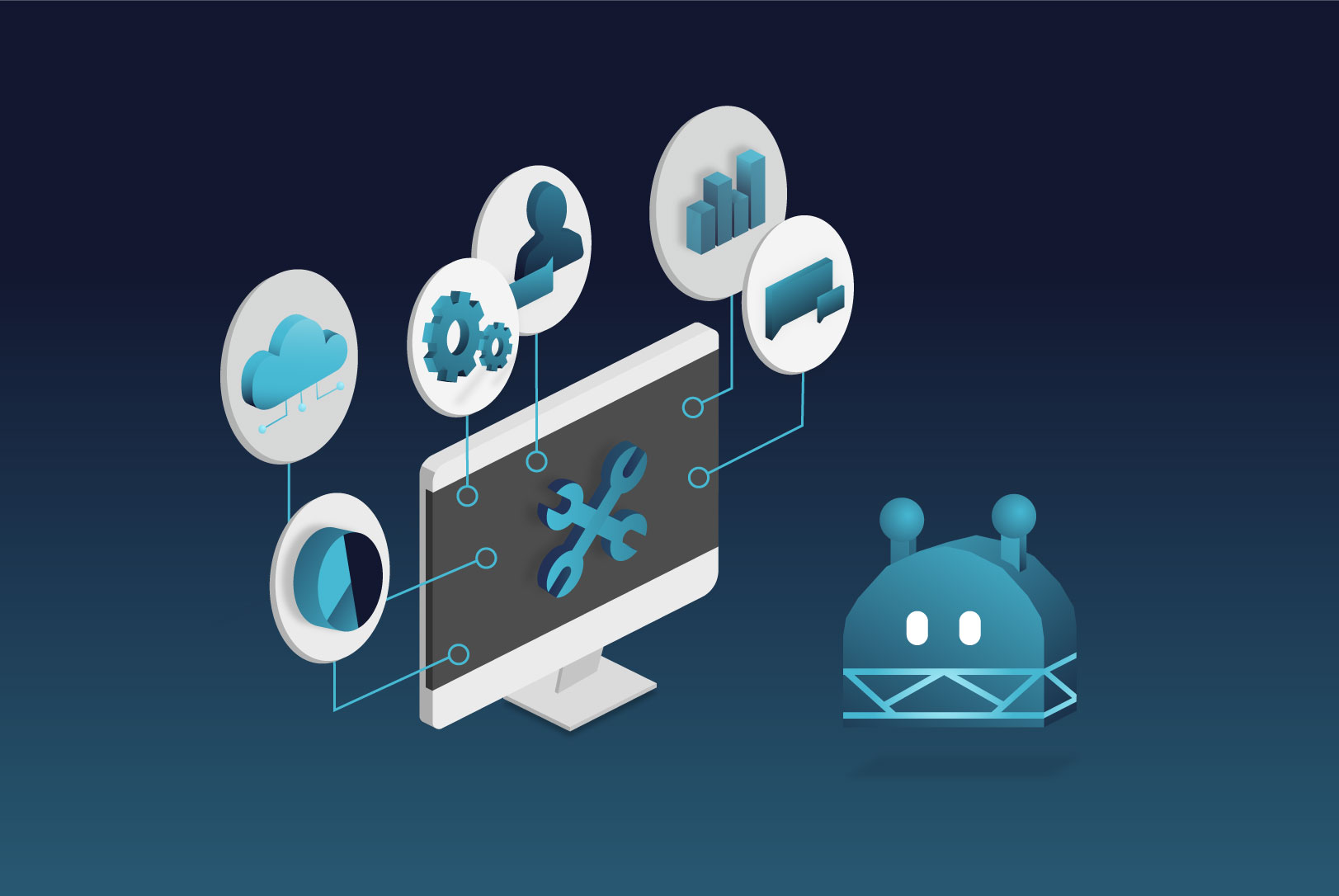Customers like to use a move as an opportunity to change their electricity supplier. This is naturally annoying for energy suppliers. Especially because acquiring new customers is more cost-intensive than maintaining existing ones.
"64% of households change their electricity provider when they move". Relocation study 2018 - Deutsche Post
In this blog article you will learn:
- how many consumers change their supplier when they move and why
- How you can retain your customers with services despite relocation
- How a chatbot can help you
- and you will learn how a relocation - chatbot works
Who changes electricity suppliers:inside when moving?
In the last ten years, the number of households changing their electricity supplier has risen massively. From 2009 to 2018, the number of households changing their supplier more than doubled and has remained at the same high level since then. A quarter of these supplier:ing changes are due to relocation.
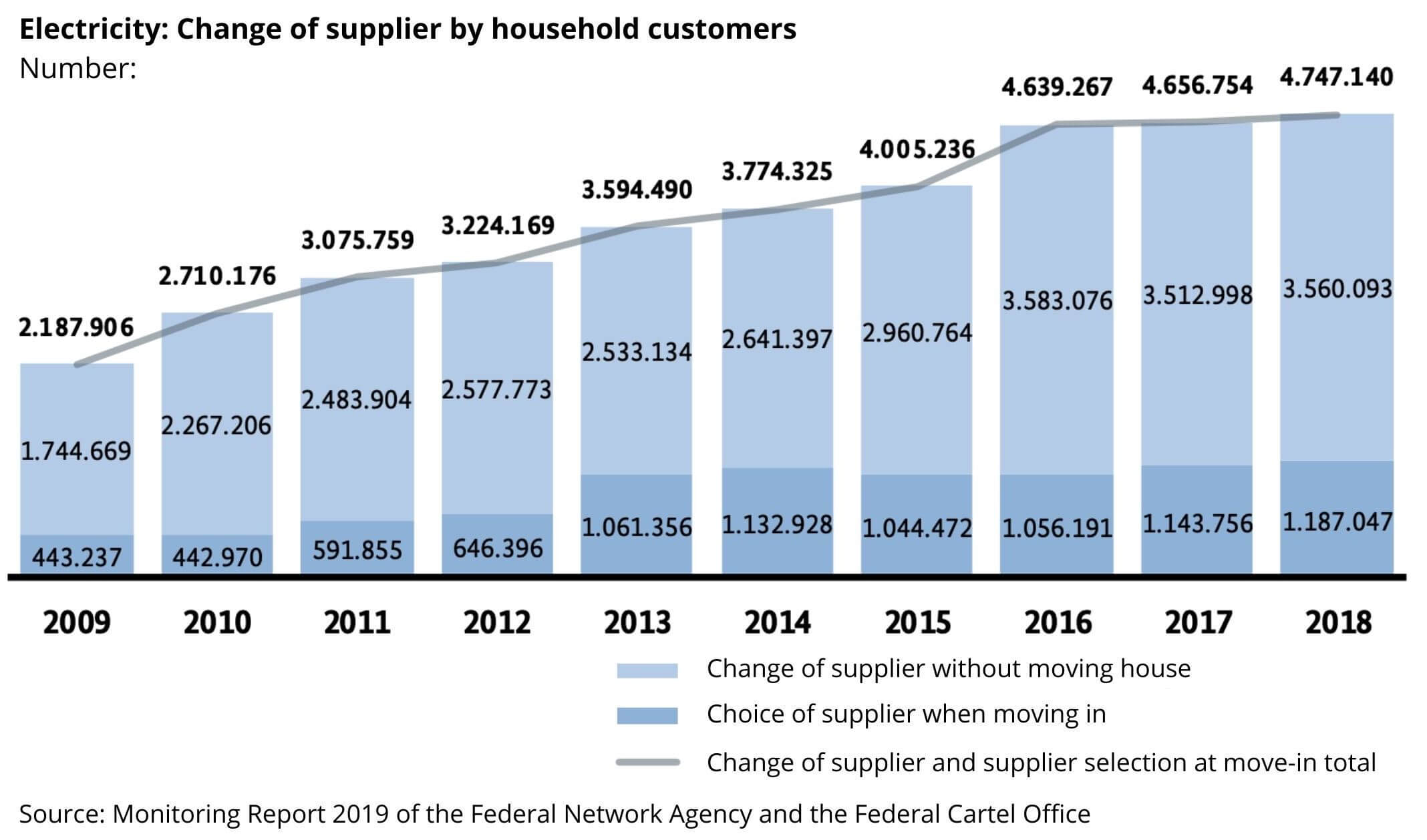
If customers change their supplier when they move, this can have various reasons. In some cases, the previous energy supplier does not deliver at the new place of residence. However, according to a population survey by PricewaterhouseCoopers, 90% of consumers change their electricity supplier because they want a lower price for their electricity.
When do consumers switch their electricity supplier?
According to the relocation study by the German Post Office
- 41% of consumers changed providers in the four weeks prior to the move
- Only 22% of the people took care of it even earlier
- 37% of consumers did not look for a new provider until after they had moved.
How can you keep your customers in this phase?
One in two respondents to the relocation study stated that moving primarily means stress. This also explains why one in three consumers does not actively look for a new provider until after the move and before that takes advantage of the generally more expensive basic service. Before the move, many customers are simply too stressed and busy to bother looking for a new energy provider.
In such a situation, you can support your customers by offering uncomplicated services that are available at any time.
Make it easy for your customers to keep you as a supplier.
Many customers switch to save money. However, the study "The New Rules of Customer Engagement" by freshworks found that 31% of consumers are willing to pay more for better customer service. So you can keep your customers loyal when they move by making it as easy as possible for them to take their contract with them.
This means that they always have a contact person to whom they can easily communicate the change of address, without having to log into a platform, remember a password or observe the service hours of the customer service.
Chatbots are particularly well suited for this purpose:
- They respond to inquiries around the clock in real time.
- They can be used on several channels simultaneously without much effort.
- They are wonderfully suited for carrying out processes such as changing an address or transmitting the counter reading.
And they meet consumers' need for self-service solutions:
"76% of consumers globally prefer to first try to solve issues on their own before contacting support."
freshworks, 2019
How does a moving chatbot work?
But how exactly does such a move via chatbot work? Let's run through this with an example:
Lara is a customer of the energy provider Energy Solutions and will soon move to a new city. She is currently packing her boxes for the move. As she does so, the file folder with all the contracts and insurance documents falls into her hands and she remembers that she still has to tell the electricity provider.
So she reaches into her pants pocket, pulls out her cell phone and opens Whatsapp. There she starts a chat with Tilo, the virtual assistant from Energy Solutions. (Of course, you can also implement your chatbot on your website).
Tilo greets her and asks her what he can help her with. Lara taps on the button "I am relocating" and starts the moving process.

First Tilo tells her what he needs. This way Lara knows which information she has to have ready. In case she is missing information, he asks her for an email address. This way she can stop and resume the process without having to give the bot information that has already been sent to him again.
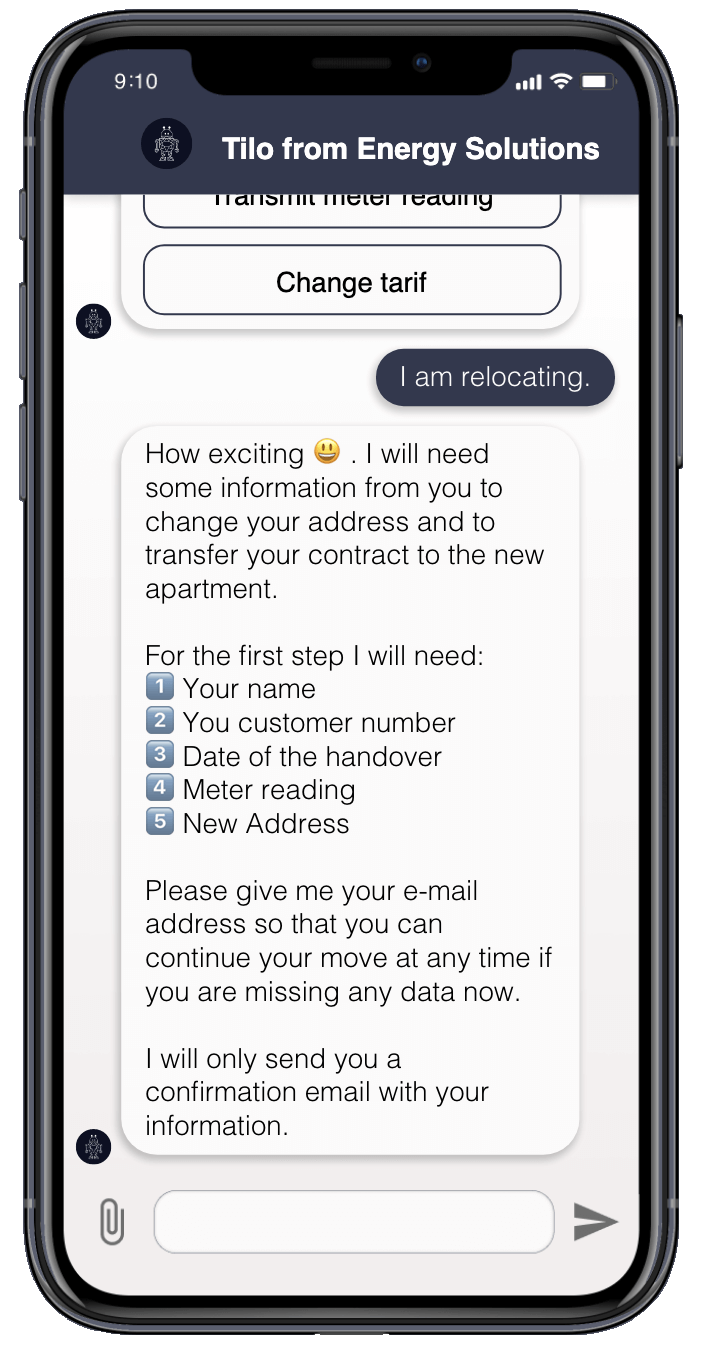
Then the virtual assistant asks Lara step by step for her name, her customer number and the date of handing over the apartment.

Afterwards Tilo asks Lara for the new address and the meter reading. Lara can enter the counter reading manually or upload it as a photo. When she uploads a photo of the counter reading, the content of the image is analyzed using Optical Character Recognition (OCR) software.
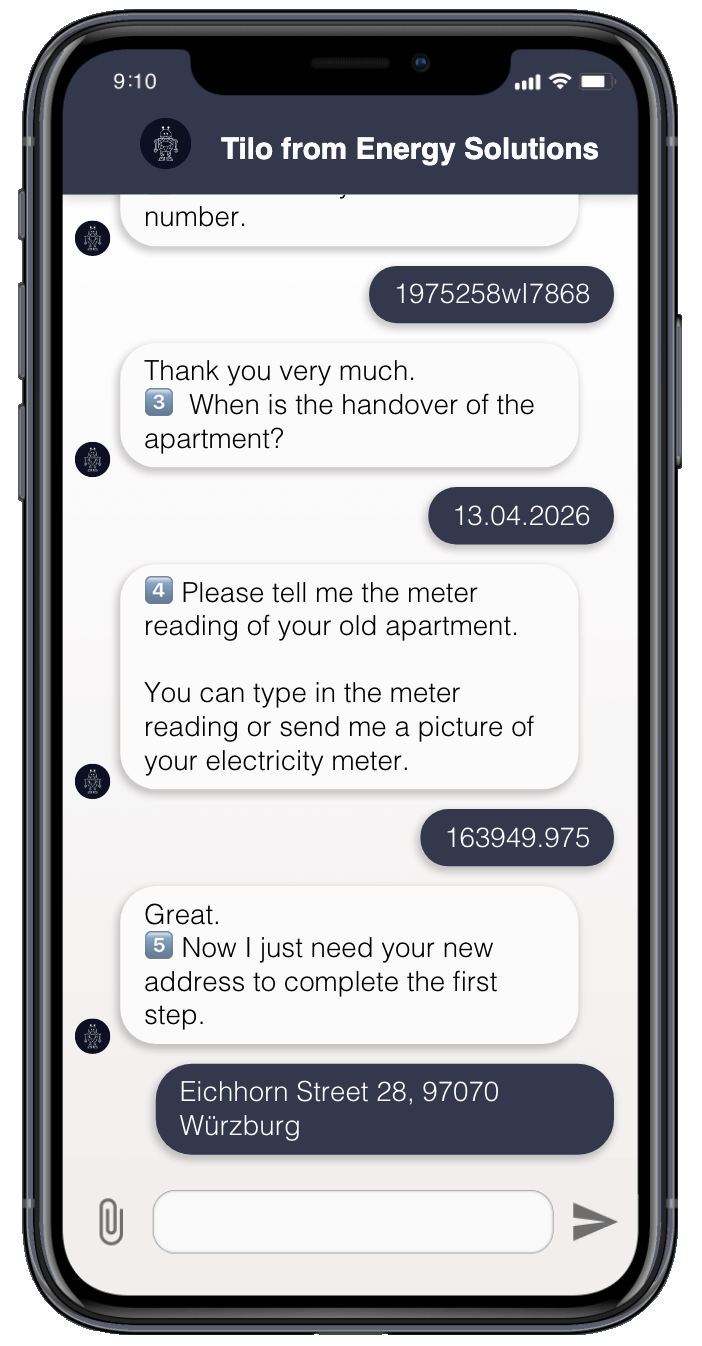
Then he asks for the date of moving in, the meter number and the meter reading in the new apartment.
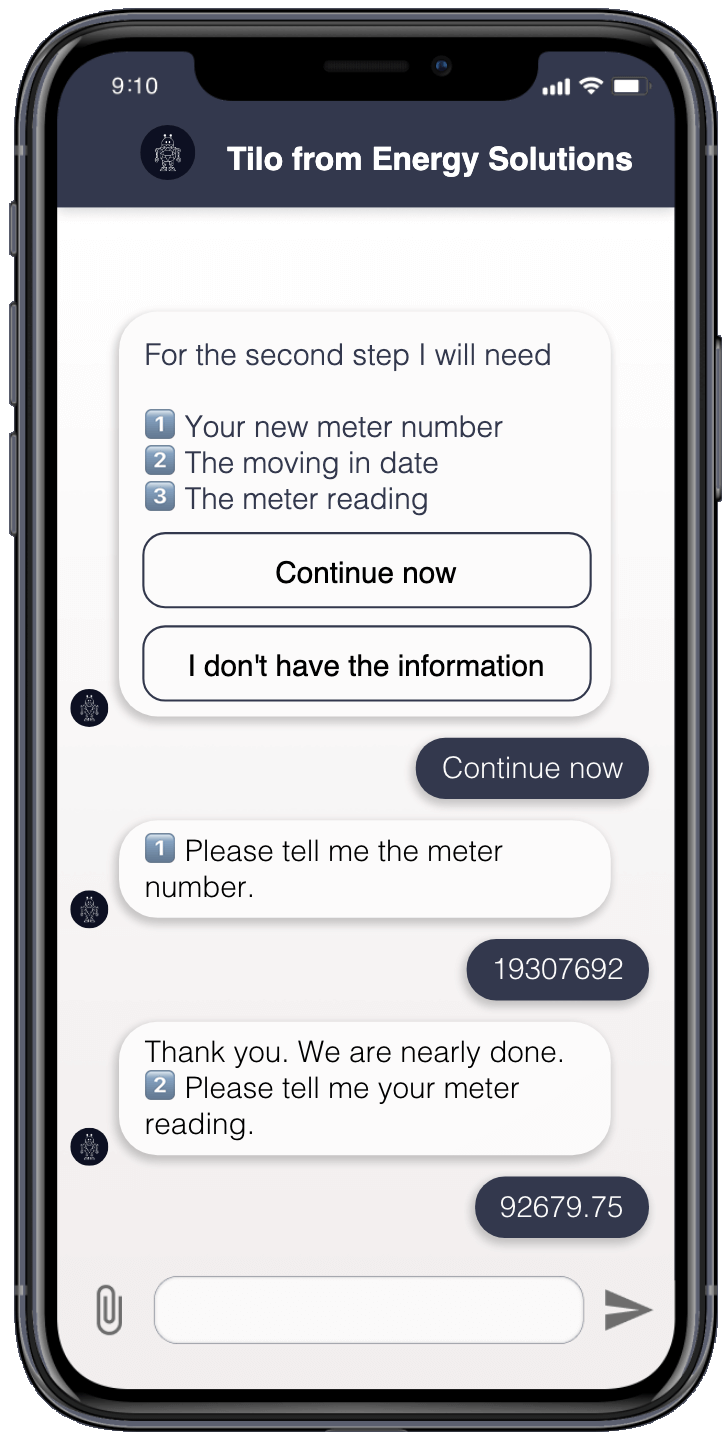
With this information, the virtual assistant can transfer the contract from the old apartment to the new apartment.
To complete the process, Lara only needs to specify the payment method and accept the terms and conditions.
Tilo can access the information in Lara's customer account via her customer number and therefore knows that Lara has had the monthly contributions collected via a SEPA mandate until now. He therefore asks her if she would like to continue paying by direct debit. If Lara wants to set up a new SEPA mandate, she can do so without leaving the chat.

Afterwards she only has to accept the general terms and conditions. These can be made available to her as a pdf download or via a link to the website.
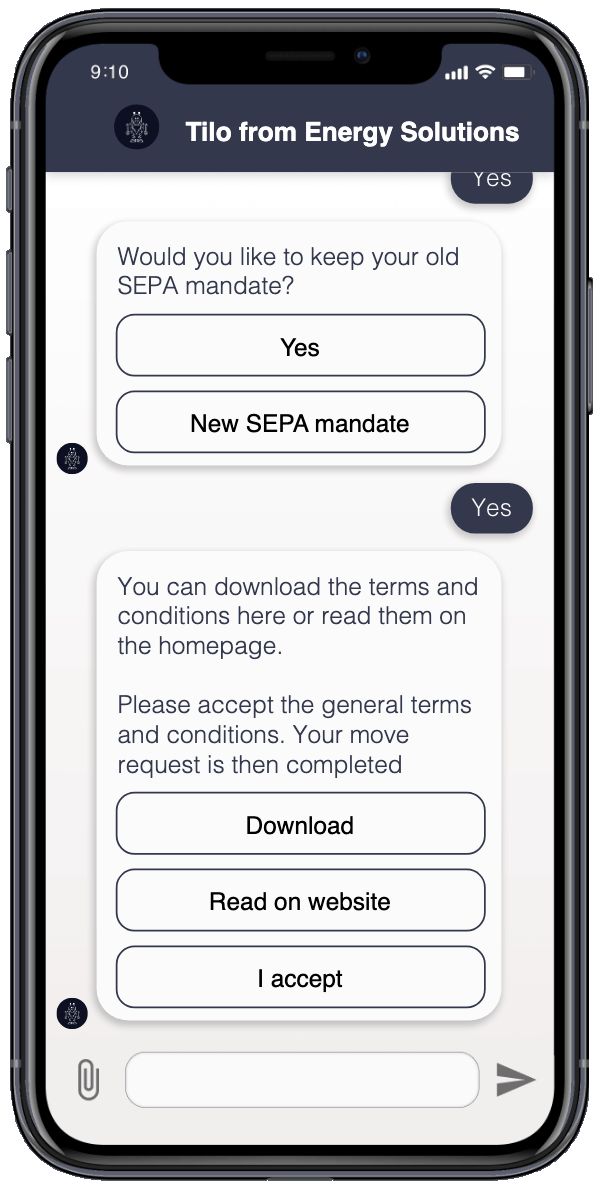
With the confirmation of the terms and conditions the process is completed. At this point the chatbot can offer Lara to send her a confirmation by email.
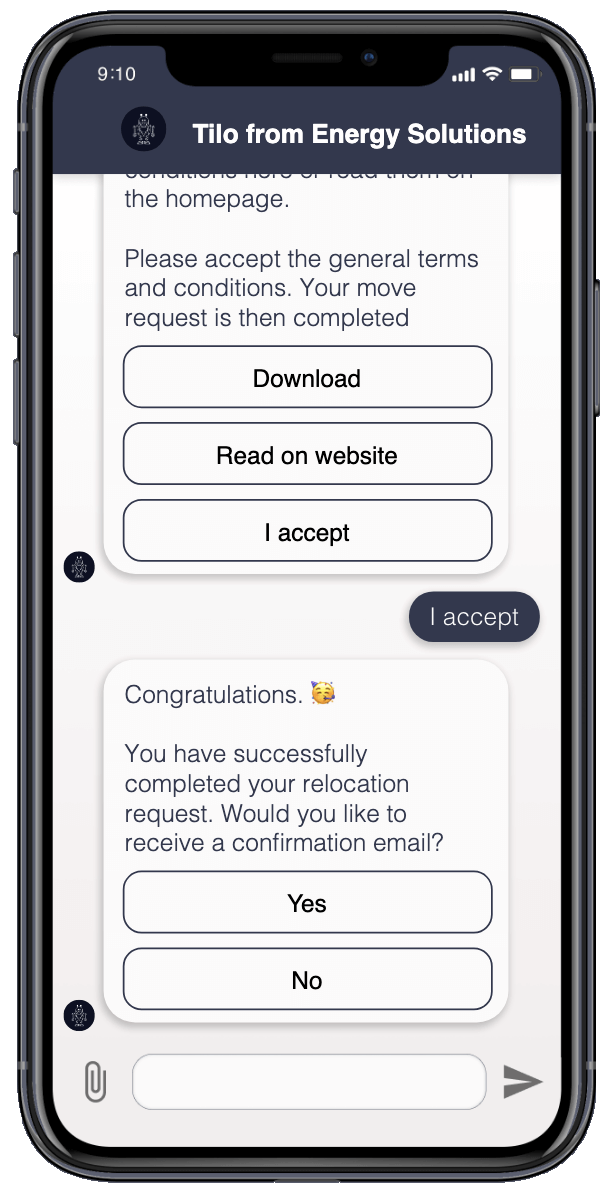
Of course, it can happen that customers do not have all the information, such as the new meter number and the new meter reading, directly at hand. In such a case, they can contact the chatbot again at a later time and provide the information.
First, the chatbot asks for the email address to identify the user.

With the help of this e-mail address, the chatbot can access the information that has already been transmitted. It knows what Lara has already told it and only asks for the information that is still missing.
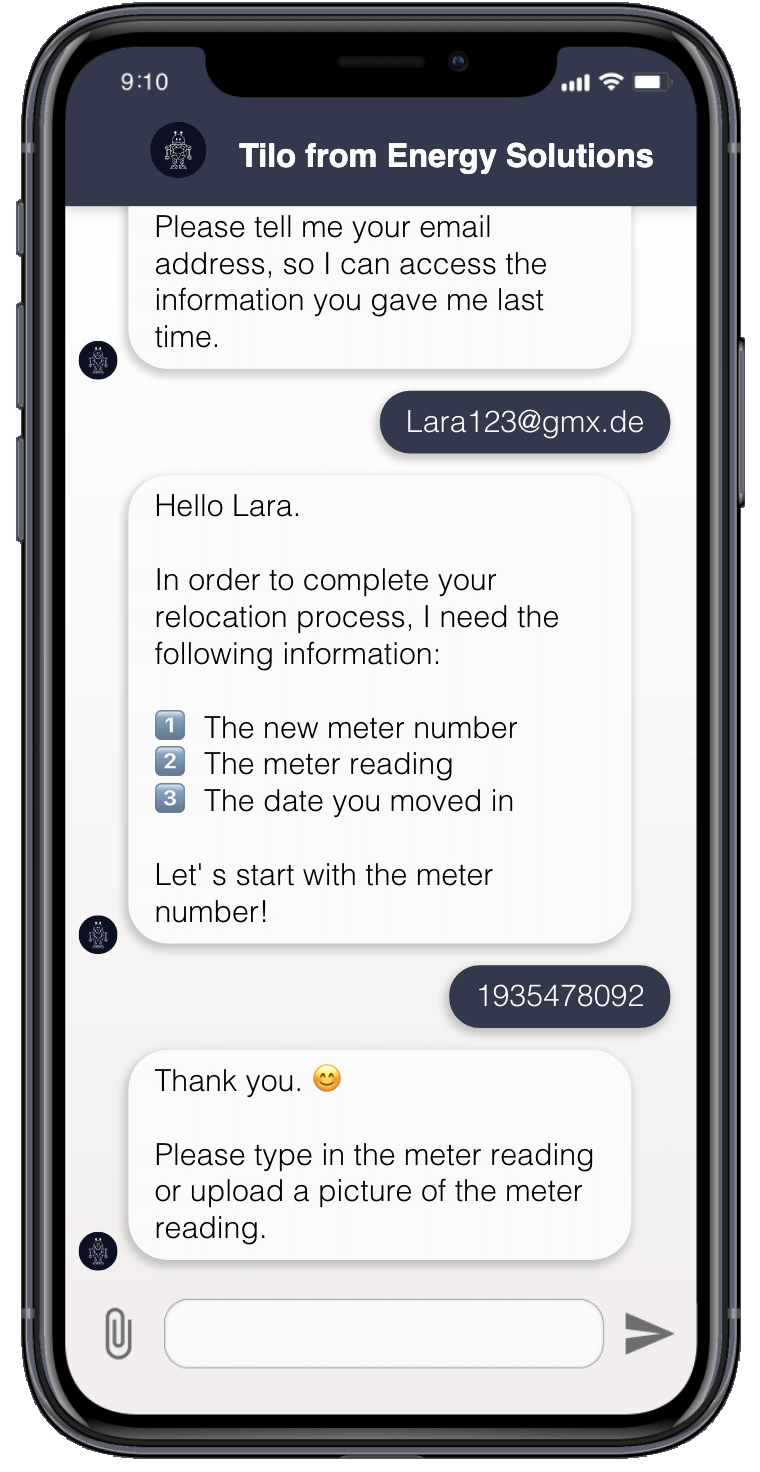
This way, you can make it as easy as possible for your customers to take their electricity contract with them to their new home. Of course, the capabilities of such a chatbot are not limited to moving. Your customers can use it to:
- report the counter reading
- change their discount
- get information about your tariffs
- change the tariff in a very uncomplicated way
- or to ask general questions about your companies.
Would you like to know what experiences other energy companies have had with the use of chatbots in customer service? Then get our case study with the energy provider Süwag and get to know Chatbot Karl.
